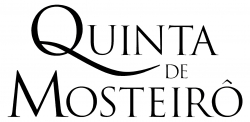Producer:
Quinta de Mosteirô
Activity:
Produtor-Engarrafador de Vinhos do Douro
Region:
Wine Styles:
About:
The Quinta de Mosteirô is located in the Northeast of Portugal, surrounded by mountains that grant it particular mesological and climatic characteristics. It belongs to the Douro Region (Baixo Corgo sub-region), classified by the UNESCO as World Heritage Site in December 2001.
The oldest references to the Quinta de Mosteirô date from the 12th century. However, the first (known) register in which the wine production is referred dates from the middle of the 16th century. In those times, the Quinta de Mosteirô belonged to, and was administrated by, the Cistercians of S. João de Tarouca. The White Monks settled in the most fertile and beautiful spots of Douro where they developed the vineyard production through the implementation of their vine growing methods, based on dutiful care of the grape-vines plantation and wise choice of the grape varieties. The quality of the terroir and high production of the Quinta de Mosteirô put it among the biggest vinicultural Douro estates of that time.
In 1983, the Quinta de Mosteirô was acquired by the present owner and, in 1991, the vineyards were completely replanted with noble grape varieties of the region in separated and identified strips of land. This plantation was made vertically, i.e., the grape-vines were planted following the slope of the ground. The possibility of selecting the exact quantity of grapes from each strip of land allows us a precise choice for the final blends and the making of monovarietal wines.
From the various grape varieties recommended by the official organisms for the production of DOC and Port wines, 21 were selected: White – Códega de Larinho, Fernão Pires, Gouveio Verdelho, Gouveio Real, Malvasia Fina, Rabigato and Viosinho; Red – Alicante Bouschet, Alvarelhão, Bastardo, Rufete, Sousão, Tinta Amarela, Tinta Barroca, Tinta da Barca, Tinta Francisca, Tinta Roriz, Tinto Cão, Touriga Fêmea/Brasileira, Touriga Franca and Touriga Nacional. This choice allowed the revival of some ancient autochthonous grape varieties.
We practice a sustainable agriculture. The cultivation of our vineyards is done according to the IOBC standards for Integrated Production, which covers ecological, ethical and social aspects of agricultural production as well as aspects of food quality and safety. Our production system is based on the use of natural resources and regulating mechanisms to replace potentially polluting inputs, and the agronomic preventive measures and methods are carefully selected and balanced taking into account the protection of health of farmers, consumers and the environment. Through the adoption of such methods, allied to many other cautions with the cultivation of our grapevines we are able to produce high quality grapes and wines in a sustainable way.
The possibility of selecting the exact quantity of grapes from each strip of land in all our vineyards allows us a fine-grained choice of the final blends as well as the production of monovarietal wines. The first steps are taken during the ripening when we check the different grape varieties in the laboratory at regular intervals, reducing them as we approach the ideal time for the picking of each grape variety. The grapes are hand picked, carefuly selected by removing leaves and rotten and dried grapes, and placed in small containers (so as to avoid its heating and/or squeezing which may lead to unwanted early fermentation) where they are transported to our vinification centre. Once there, the grapes are selected once again and sent to a destemmer where the stalks are removed. Then, they follow directly to the press (gravity circulating) where they are squeezed.
The white and rosé musts are fermented without skins and kept under temperature control. The red musts go directly to the fermentation (stainless steel) vats where the pelicular maceration is made also under temperature control. In most cases, the whole process of vinification is done separately for each grape variety. This way, we can follow the development of the different wines and make a rigorous selection of those that may become the elected monovarietal wines or particular blends. Red wines are aged in Portuguese and French oak barrels (for a period always inferior to 6 months, and only for a part of the lot). Our aim is to achieve well-balanced, smooth, and elegant wines.
For more information about our vineyards and wines visit
www.quintademosteiro.com
facebook.com/quintademosteiro
Contact Us:
